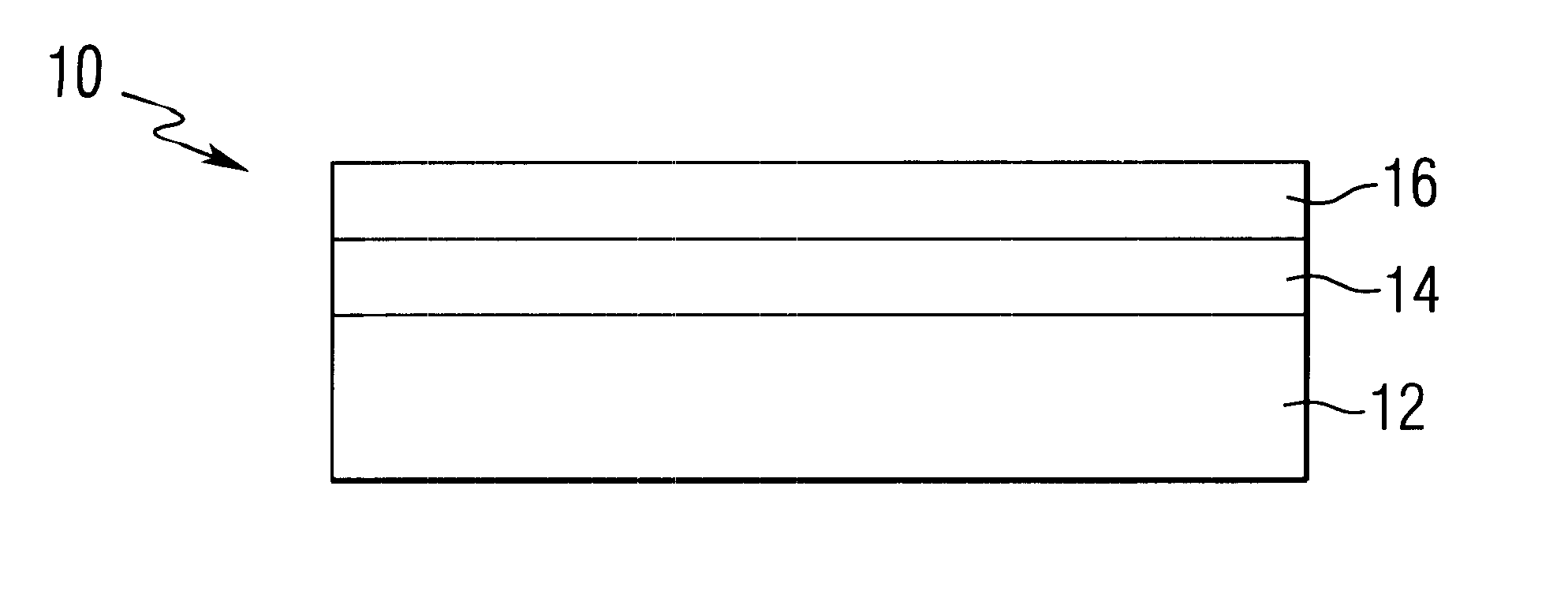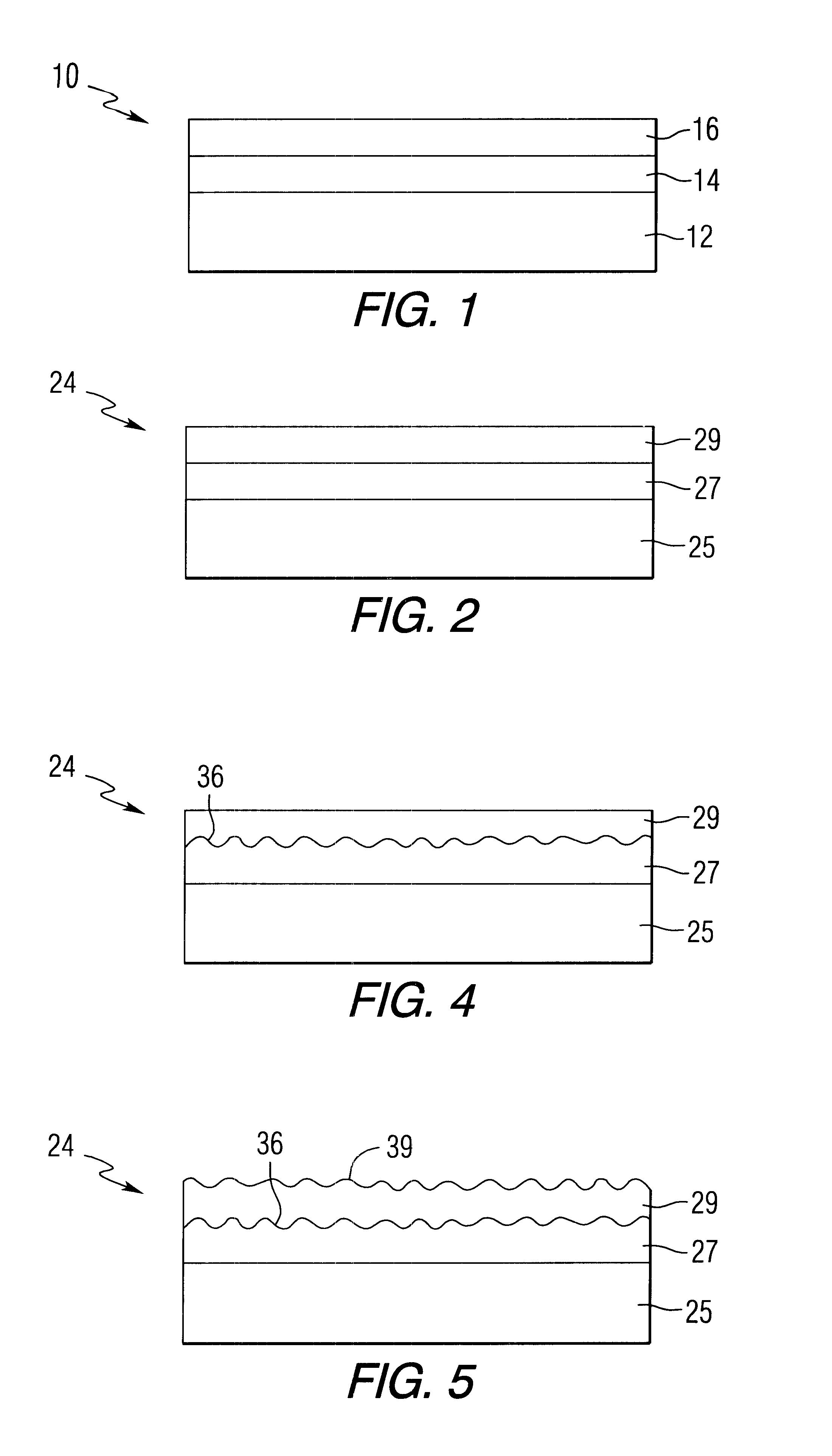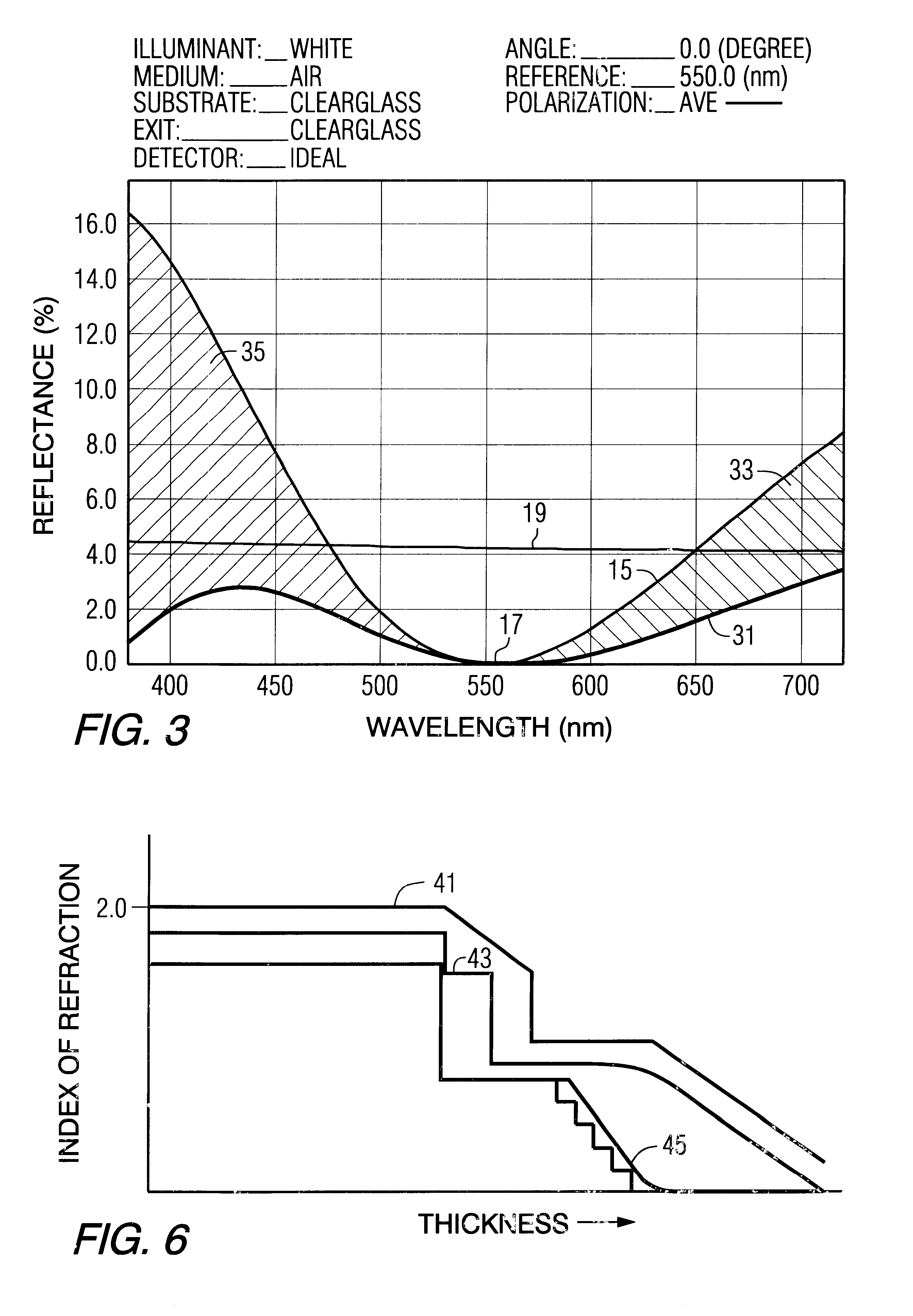Conductive antireflective coatings and methods of producing same
a technology of anti-reflective coatings and coatings, applied in the direction of natural mineral layered products, lighting and heating apparatuses, instruments, etc., can solve the problems of inability to improve beyond certain limits, limitations on carrier concentration and mobility, and inconvenient physical thickness specification of various layers
- Summary
- Abstract
- Description
- Claims
- Application Information
AI Technical Summary
Problems solved by technology
Method used
Image
Examples
example 2
Comparative Example
This example demonstrates the two-layer anti-reflection coating. The refractive index of the TCO layer is about 2.1 in the visible portion of light. The human eye is most sensitive to 550 nm light so a quarter wave of TCO would have a physical thickness of 655 .ANG. at this wavelength. The refractive index of the top layer of the 1 / 4-1 / 4 wavelength design is calculated from the following formula: refractive index of layer 2 is equal to the square root of the refractive index of layer 1 squared times the index of refraction of the incident medium divided by the index of refraction of the substrate. The refractive index of layer two is 1.71 for layer 1, the refractive index is 2.1, the refractive index for glass is 1.51 and the refractive index of incident medium 1.0. The physical thickness of layer 2 is 804 .ANG. for a 1 / 4 wave optical thickness at 550 nm. FIG. 11 is a graph generated using a commercial computer program to calculate the reflectance versus wavelengt...
example 3
The improvements over 1 / 4-1 / 4 wavelength design by the 1 / 3-1 / 5 wavelength design of the instant invention are demonstrated in this example. The optical constants of a fluorine-doped tin oxide were determined as a function of wavelength in the visible spectrum using a variable angle spectroscopic ellipsometer and are listed in Table 3.
The physical thickness of the fluorine-doped tin oxide layer is 1060 .ANG. for an approximate 1 / 3 optical thickness at a design wavelength of 550 nm using the above-discussed relationship for optical thickness. The second layer is a silica layer with a refractive index of 1.45 and a physical thickness of 778 .ANG. for a 1 / 5 optical thickness at a design wavelength of 550 nm. The reflectance as a function of wavelength is calculated using a commercial thin film software package and is shown in FIG. 5 curve 31. The photopic reflectance is 0.44% and the average reflectance is 1.5%. Comparing this to the 1 / 4-1 / 4 wavelength design described in Example 2, the...
example 4
The 1 / 3-1 / 5 anti-reflection design of the instant invention has utility in applications where TCOs and their index restrictions do not occur. Table 4 is a list of anti-reflection designs that partially demonstrate the scope of the instant invention. The reflectance values listed in Table 4 were calculated using a commercial thin film program. Column 1 lists the thickness of layer 2, column 2 lists the refractive index of layer 2, column 3 lists the thickness of layer 1, column 4 lists the refractive index of layer 1, column 5 lists the optical thickness of layer 2, column 6 lists the optical thickness of layer 1 and column 7 lists the photopic reflectance for the designs. Row 15 is a 1 / 4-1 / 4 wavelength design showing the high photopic reflectance.
PUM
| Property | Measurement | Unit |
|---|---|---|
| sheet resistance | aaaaa | aaaaa |
| refractive index | aaaaa | aaaaa |
| reflectance | aaaaa | aaaaa |
Abstract
Description
Claims
Application Information
 Login to View More
Login to View More - R&D
- Intellectual Property
- Life Sciences
- Materials
- Tech Scout
- Unparalleled Data Quality
- Higher Quality Content
- 60% Fewer Hallucinations
Browse by: Latest US Patents, China's latest patents, Technical Efficacy Thesaurus, Application Domain, Technology Topic, Popular Technical Reports.
© 2025 PatSnap. All rights reserved.Legal|Privacy policy|Modern Slavery Act Transparency Statement|Sitemap|About US| Contact US: help@patsnap.com



